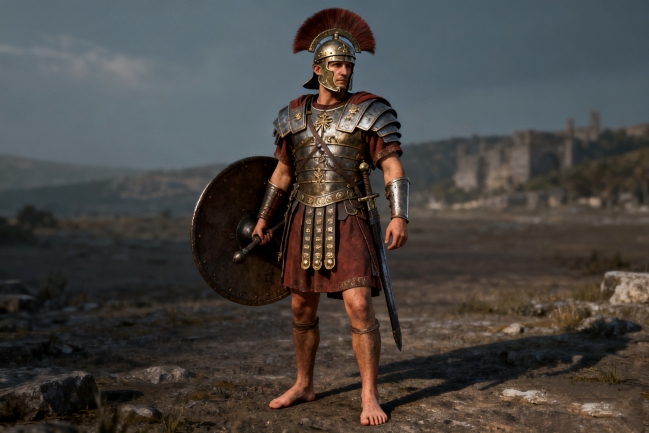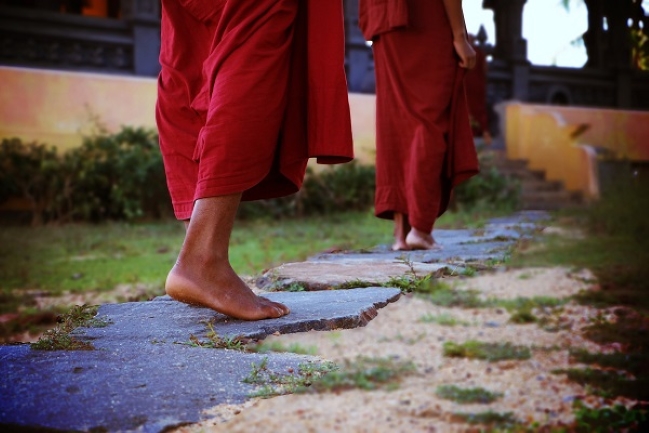Throughout human history, going barefoot has been not only a natural state but also a cultural symbol and representation of wisdom. From Eastern Zen practitioners walking meditation in bare feet to the simple living advocated by Western Stoicism; from ancient sages teaching barefoot to modern scientific research on the health benefits of barefoot activities—this simple act carries profound humanistic significance and practical value. As a barefoot shoe manufacturer, we focus not only on product comfort and health but also on inheriting and promoting this timeless barefoot wisdom.
Eastern Barefoot Traditions: Pathways to Cultivation and Enlightenment
Buddhist Barefoot Practice
The Daoist Path of Nature
Daoist philosophy similarly values barefoot practices. The concept of “returning to simplicity and authenticity” in the Dao De Jing aligns perfectly with barefoot principles. Zhuangzi advocated living “in harmony with the Dao,” opposing excessive artificial adornment, with barefoot living representing this natural perspective. Ancient Daoist practitioners often walked barefoot in wilderness areas, believing this facilitated better communication with natural energies and absorption of heaven and earth’s essence.
Traditional Chinese Medicine and Barefoot Health Preservation
In Traditional Chinese Medicine theory, the soles of the feet are considered convergence points for the body’s meridians. The Yellow Emperor’s Classic of Medicine documents correspondences between reflexology points on the feet and internal organs. Barefoot walking essentially provides natural foot massage, stimulating acupoints, promoting blood and qi circulation, and regulating organ function. The “Five Animal Play” exercises created by Eastern Han dynasty physician Hua Tuo included barefoot practice, believing this better guided earth energy and enhanced physical constitution.
Western Barefoot Traditions: Fusion of Philosophy and Athletics
Ancient Greek Barefoot Philosophy
Ancient Rome’s Barefoot Warriors
The Roman military was renowned for its strict discipline and training, which included barefoot exercises. New recruits typically underwent months of barefoot marching and drills to toughen their feet and build overall endurance. Historians record that Roman legions could cover over 30 kilometers daily, mostly barefoot or wearing simple sandals. This training enabled Roman soldiers to maintain combat effectiveness across varied terrain.
The Symbolism of Bare Feet in Christianity
In Christian tradition, bare feet carry important symbolic meaning. The Bible repeatedly mentions the religious significance of bare feet: Moses removing his sandals before the burning bush showing reverence for holy ground; Jesus washing his disciples’ feet demonstrating humility and service. Many medieval saints and mystics chose barefoot living, such as St. Francis of Assisi who abandoned wealth to spread the gospel barefoot, becoming an exemplar of simple living.

Barefoot Practices and Modern Science: Rediscovering Health Benefits
Biomechanical Advantages
Modern scientific research confirms the rationality of ancient barefoot wisdom.
A landmark 2009 study in Nature showedsignificant differences in gait and foot strike patterns between habitual barefoot runners and shoe wearers.
Barefoot runners tend to land on the forefoot, generating impact forces three times lower than heel-striking, significantly reducing sports injury risks.
Research by Harvard evolutionary biology professor Daniel Lieberman further demonstrates that barefoot running may be the most biomechanically appropriate way for humans to run.
The human foot contains 26 bones, 33 joints, and over 100 muscles, tendons, and ligaments—this complex structure evolved specifically for barefoot locomotion.
Sensory and Neurological Development
The soles of the feet are among the most nerve-rich areas of the human body, with over 200,000 nerve endings. Barefoot walking provides rich tactile stimulation crucial for neurological development and function maintenance. Studies show barefoot stimulation improves proprioception (awareness of body position), enhancing balance and coordination.
The benefits are particularly pronounced for children. German research found that regularly barefoot children develop better motor skills and foot health than frequently shod children. This occurs because barefoot movement allows natural development of foot muscles, forming healthier arch structures.
Mental Health Benefits
Direct barefoot contact with natural surfaces (grass, sand, soil)—called “grounding” or “earthing”—has shown in recent studies to potentially reduce inflammation, improve sleep, and decrease stress. Psychologists have found that barefoot walking increases mindfulness states, reduces anxiety levels, and enhances overall wellbeing.
Symbolism of Barefoot
Humility and Authenticity: Barefoot means shedding pretenses and returning to simplicity.
Connection with Nature: Barefoot directly links human beings to earth’s energy.
Asceticism and Practice: Barefoot strengthens both willpower and spirit.
Health and Healing: Barefoot was believed to improve vitality and health.
Modern Barefoot Shoes: Integrating Traditional Wisdom with Contemporary Needs
Design Philosophy
As a barefoot shoe manufacturer, our design philosophy is rooted in this barefoot wisdom. Barefoot shoes don’t merely imitate the barefoot state but maximize barefoot benefits through scientific design while providing necessary protection. We pursue the “barefoot experience, not just barefoot appearance.”
Quality barefoot shoes should feature: zero drop (equal sole thickness throughout), flexibility (natural bending and twisting), wide toe boxes (allowing toe freedom), and minimal protection (only essential shielding). These characteristics collectively maintain natural gait and foot function while wearing shoes.
Cultural Heritage and Innovation
We integrate Eastern barefoot wisdom into product design. For example, our toe shoes inspired by Japanese tabi socks preserve traditional elements while meeting modern aesthetic and functional needs. Elements from Indian barefoot practices like ankle bells have been innovatively incorporated into children’s barefoot shoes, adding fun while training balance.
Western barefoot traditions similarly inspire us. Ancient Greek athletes’ barefoot training理念 informs our sports shoe designs, making products suitable for both daily wear and athletic activities. Our Roman sandal collection directly adapts ancient designs but uses modern materials and technology for enhanced comfort and durability.
Health and Lifestyle Promotion
As a barefoot shoe manufacturer, we see ourselves as promoters of barefoot culture rather than mere merchandise sellers. We regularly organize barefoot experience events and workshops educating the public about proper barefoot walking methods and benefits. Collaborations with podiatrists, physical therapists, and sports coaches help us continuously optimize products ensuring scientific validity and health value.
Conclusion: The Future of Barefoot Wisdom
From Eastern cultivation to Western philosophy, from ancient practices to modern science, barefoot wisdom transcends time and culture, demonstrating enduring vitality.
This wisdom reminds us that sometimes the most advanced solutions are the most natural approaches; the most complex problems often require the simplest answers.
Whether you choose complete barefoot living or barefoot shoes, we encourage you to try this ancient yet novel lifestyle—to experience the wonder of direct contact between your soles and the earth, and rediscover the long-lost freedom of feet constrained by shoes.
Because sometimes, the best way forward is to return to the most natural gait—moving forward barefoot.
If you’d like to learn more about barefoot shoes, culture, or design, feel free to contact us.




